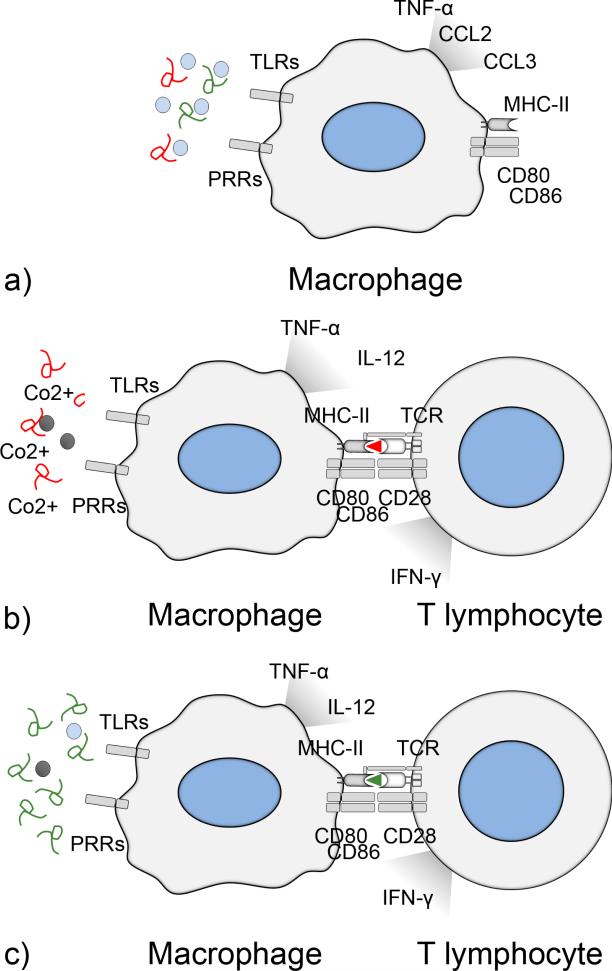FIG. 5.
Adaptive immune system in aseptic and septic loosening. (a) UHMWPE and PMMA wear particles accumulate PAMPs and DAMPs on their surfaces and are sufficient to activate macrophages via TLRs and other pattern recognition receptors (PRRs), leading to production of pro-inflammatory cytokines and chemokines ultimately leading to aseptic osteolysis. Due to the lack of presentable antigen, the adaptive immune system is not activated and lymphocyte subpopulations are rare in the peri-implant tissues. (b) In the case of metal wear, cobalt ions can activate macrophages directly via TLR activation and indirectly by inducing cell necrosis and release of large amounts of DAMPs. In addition, at least in genetically susceptible individuals, cobalt ions can activate adaptive immune system by forming haptens with host proteins. T helper type 1 lymphocytes enhance macrophages inflammatory responses by secreting interferon-γ that induce M1 polarization. As a marker of this lymphocyte activation, various lymphocyte subpopulations are characteristic for the adverse host reaction against metals. (c) In fulminant septic loosening, dividing bacteria provide both the danger signal and a plentitude of various antigens to activate the adaptive immune system.

